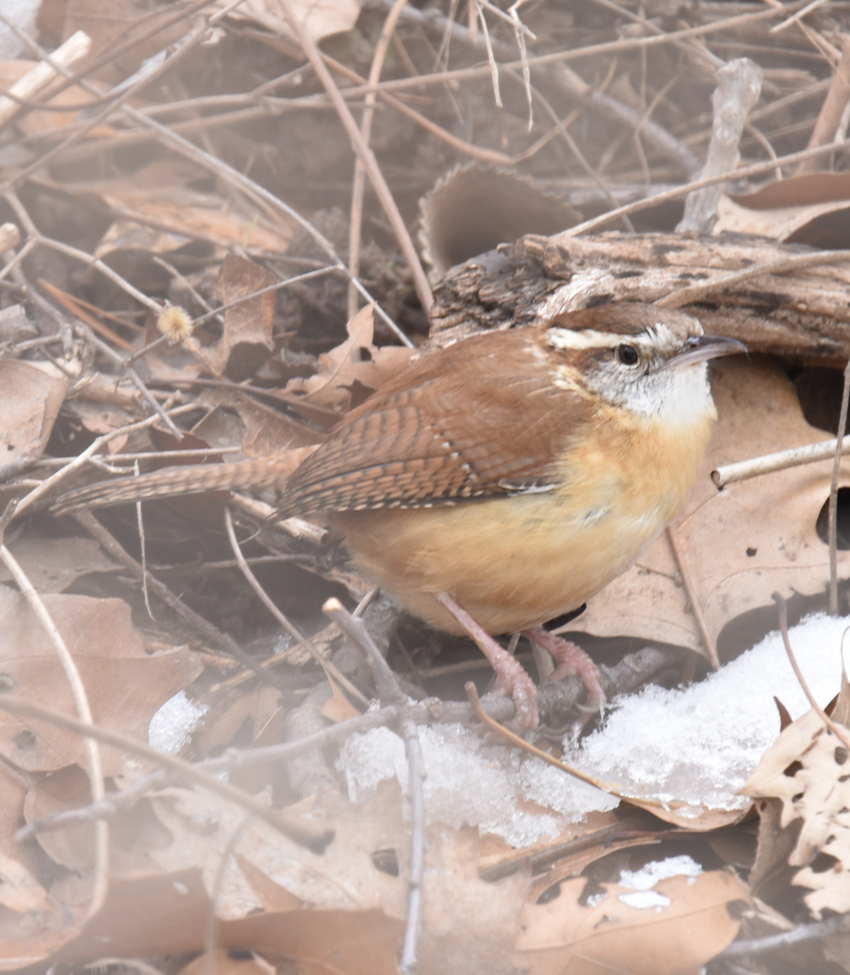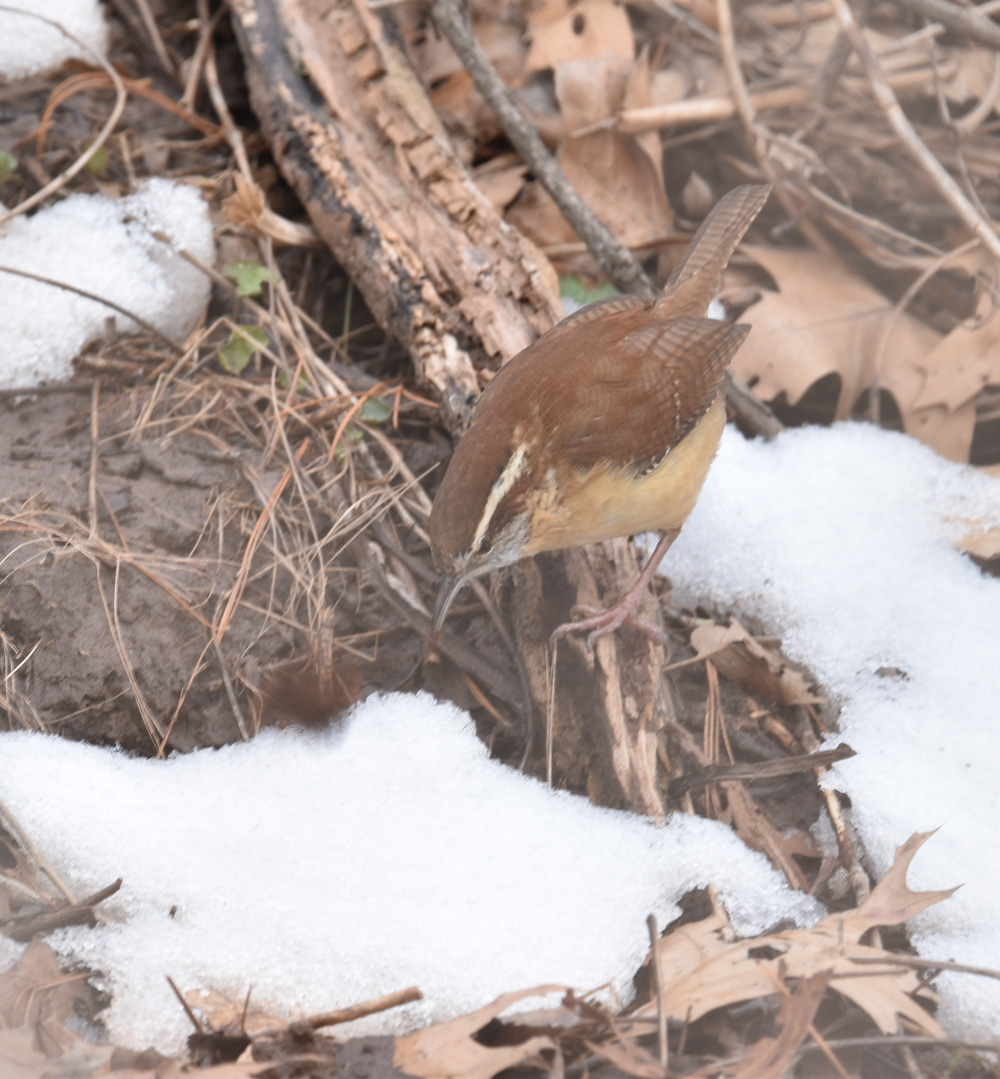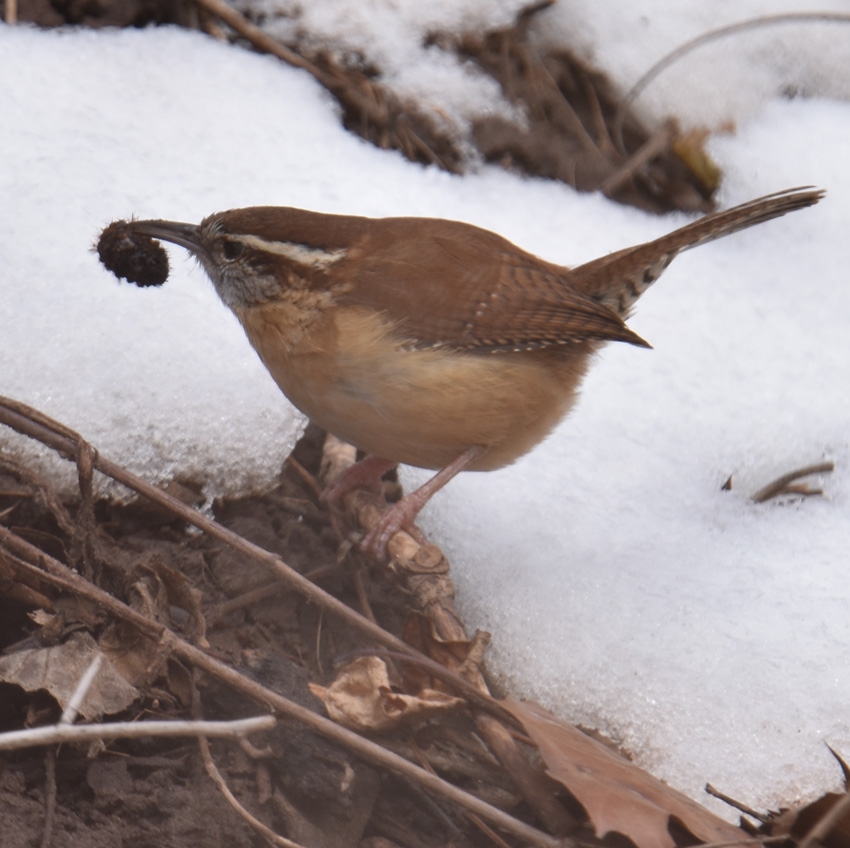In March of 2016, I was fortunate enough to watch two different types of wrens successfully hunting for food along the path at the Lasalle Marina in Burlington. Snow was softly falling, Mute, Tundra and Trumpeter Swans were flying in and out, landing on the lake, and though spring was almost here, it was none to warm.
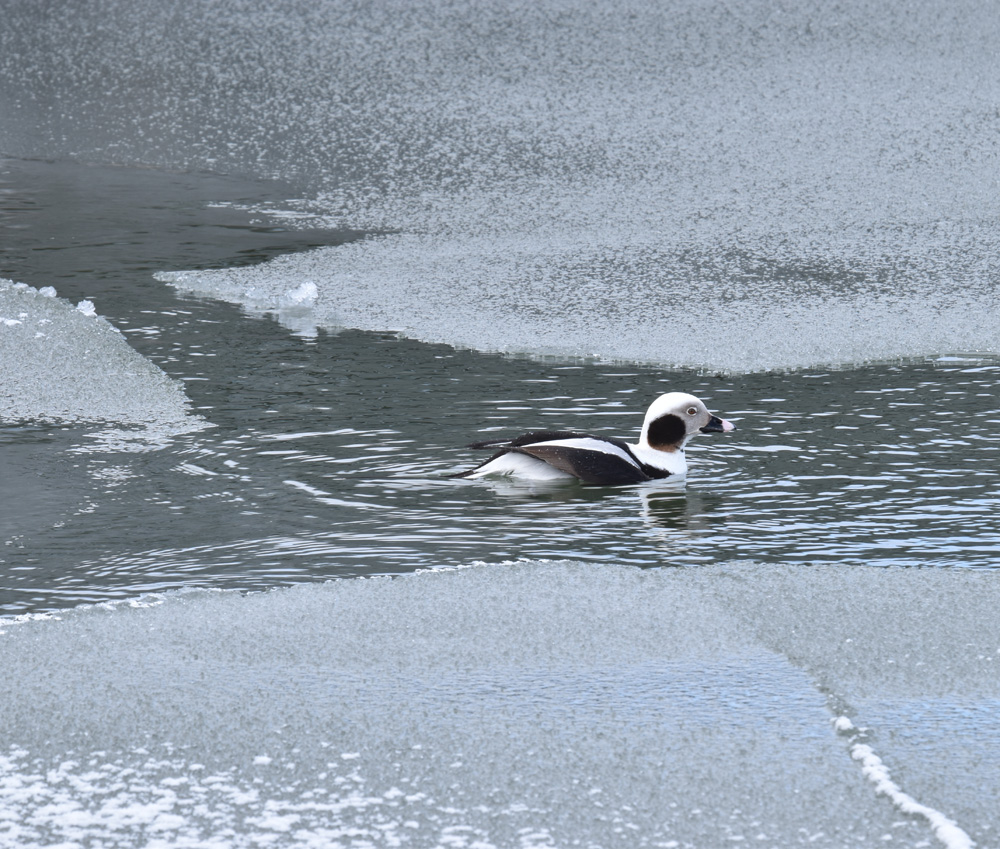
This Long-tailed Duck preferred to surface in the open water leads.
A Winter Wren Never Stops Moving
The first wren I spotted was a tiny golf-ball of fluff moving at an amazing speed along the limestone blocks set as a retaining wall along the edge of the path. At first, it was difficult to even see what it was. Then it paused to investigate a niche between two boulders and I could see it clearly enough to identify.

It’s hard to point out a Winter Wren to someone else!
Winter Wrens must have been named by someone in the south because they move south to spend the winters, often arriving in the Toronto area in September. By then, the House Wrens who nest locally have usually already left. Most Winter Wrens also leave, continuing to journey south, but a few remain each year to challenge bird photographers with their fast-paced ways.
I watched this Wren fly-run rapidly along the edge of the boulders. It would stop to investigate each niche, even disappearing in between two rocks for a minute or more. I was never quite sure if it would come out the same opening, or travel under and behind a rock and pop out further down the path. To keep things lively, it also double-backed once or twice, before continuing towards the end of the path furthest from the boat launch.
Eventually, it ran out of rocks. Undeterred, it switched to checking at the bases of tree trunks. Again, if there was a ‘cave’ or sheltered nook around the roots, it spent a great deal of time thoroughly checking it for food. I could see it found something worth swallowing several times.
A Carolina Wren Sings a Song and Finds a Spikey
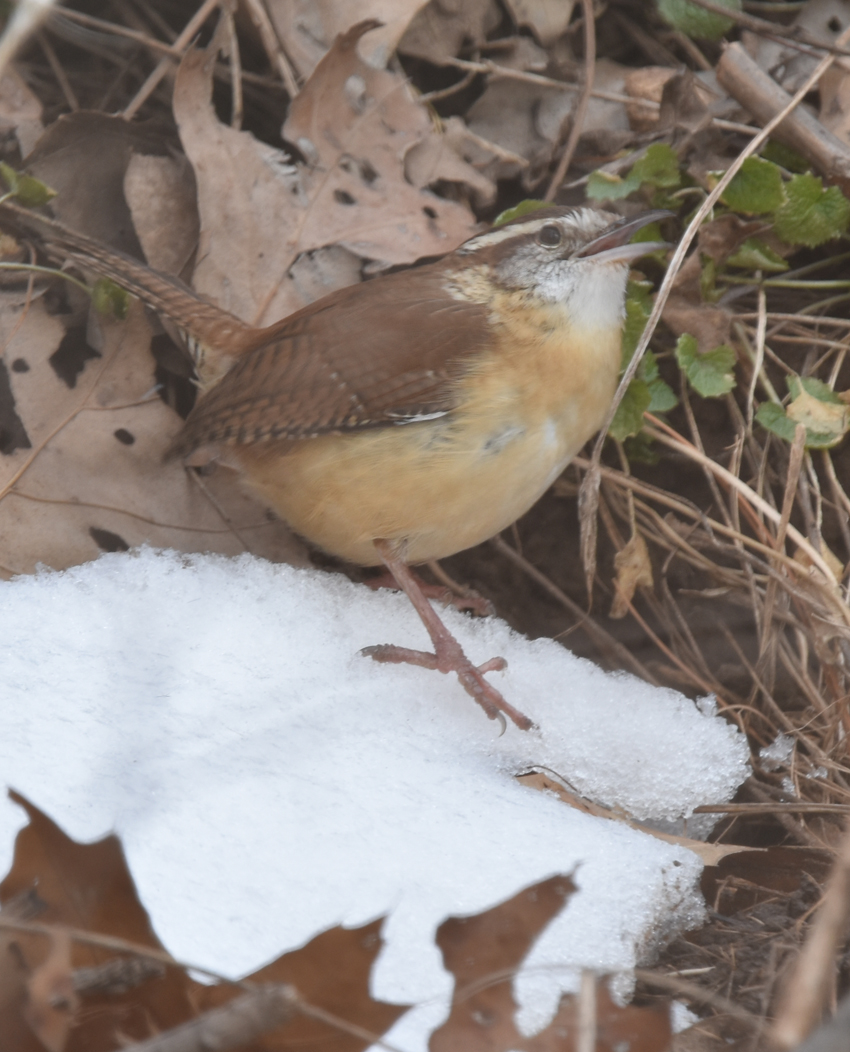
This Carolina Wren would stop and sing frequently.
Just after the Winter Wren disappeared up the hill, too far from the path for me to see, another Wren began belting out a cheerful call. I knew the Carolina Wren must be close by but for some reason I have trouble tracing it from only its sound. Luckily for me, this one was moving a lot, so I soon spotted it.
Unlike the Winter Wren, the Carolina was hunting mostly at the edges of patches of crystal snow. It even stopped and pecked at the snow many times. I’m not sure if it was ‘eating’ some to get a drink or if there were small insects on top.
It also flipped lots of leaves, pausing to swallow something too quickly for me to see.
Several times it perched on fallen branches or logs and stared intently at the ground below. One time, it found this large “spikey.” It spent almost a minute picking at it and eating. I’m not sure if it is a tightly rolled up caterpillar or a seed head. (If anyone knows for sure, please leave a comment.) Either way, it seemed pleased with its find.
Carolina Wrens will happily eat seeds from feeders. They seem to be fairly successful at over-wintering even in cold winters around the Toronto area if they have easy access to well-stocked bird feeders.
It was fun to watch the two types of Wrens finding fodder for the winter. Since spring arrived the next week, I’m fairly confident both made it successfully through the lean, dark, cold months.
Related Reading
- If It’s Called a Thrasher Why Is This Rusty Red Bird So Silent In the Dead Leaves?
- First Signs of Spring at Lasalle Marina Park
- House Wren Seeks a New Home for Spring Occupancy
Join In
Do you have Wrens in your neighbourhood? Please share your sighting with a comment.

